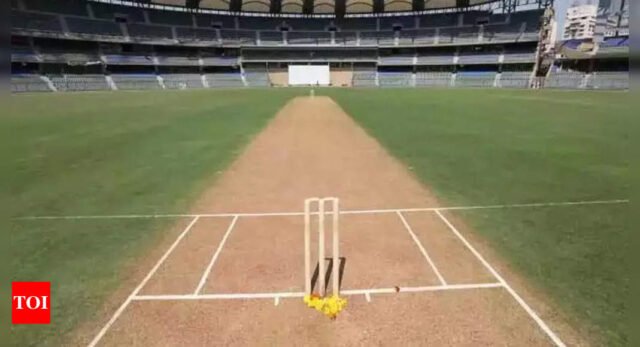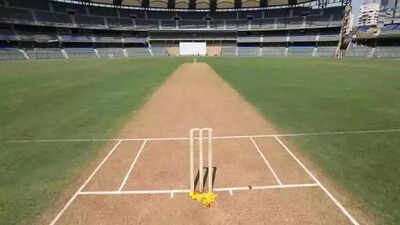Hyderabad: Andhra boy Nitish Kumar Reddy‘s success story in the Test series in Australia has brought the vision, infrastructure and focus of Andhra Cricket Association (ACA) into limelight. At a time when many associations are in a poor way, ACA seems to have found the right formula to shed the tag of being mere pushovers in domestic cricket.
For many years, Andhra cricketers had to travel to Hyderabad, Chennai or Bangalore to pursue their careers. All that changed in 2010 when ACA secretary Gokaraju Gangaraju roped in the services of former India wicketkeeper MSK Prasad as the director of cricket operations.
Setting aside his 28 years of service with BDL in Hyderabad, Prasad shifted base and in six years, changed the face of ACA to such an extent that it has now become a role model for its effective use of funds given by the Board of Control for Cricket in India (BCCI) to state units — Rs 30 crore as annual fund and Rs 100 crore as infrastructure subsidy.
That and the realization that for Andhra cricket to improve, there needs to be a two-pronged strategy — quality infrastructure and quality coaching — set the ball rolling. “When BCCI is giving substantial funds, I saw no need for Andhra players to go elsewhere,” Prasad told TOI. “Instead, we felt the money should be put to the right use. Good infrastructure will always produce quality players.”
Like Karnataka, which separated cricket from administration when they were demoted to Ranji Plate group in 2010, Andhra too saw the need for course correction. “We had a wonderful team with a common goal. DV Subba Rao, Gangaraju, and DV Somayajulu were people of great repute. I realised that I can’t do all this with the reputation of a cricketer. The ACA experience helped me in creating a bench strength when I became the national selector and chairman of the senior selection committee. I am sure that if more associations adopt this model, India’s bench will never run dry,” Prasad said. Apart from two international centres in Visakhapatnam and Vijayawada, ACA had nothing to show in the districts. Now, 13 districts have 18 grounds ready to host first-class games.
Once districts were equipped, focus turned to 48 rural centres. The spending of BCCI funds was clear — 40% on infrastructure, 40% on game development, 10% on salaries, and 10% corpus. ACA spends nearly Rs 80 lakh on monthly stipend to around 200 players in its various academies. “Each kid gets Rs 4,000 per month. The idea is that no kid should be a burden for their parents,” he said.
With infrastructure in place, coaching took centre-stage. The state was divided into three zones and three Level 3 coaches were appointed: CD Thomson (Under-14) in Kadapa, Krishna Rao (U-16) in Mangalagiri, and Apurva Desai (U-19) in Vizianagaram, with former Ranji captain Bhaskar Ramamurthy, MN Ravi Kumar, and Satya Prasad to oversee them and scout for talent.
Seventy Level A coaches were appointed and three sub-centres created for each district. To make it more competitive, the zonal system was scrapped — “it didn’t help in the development of players” — and 13 districts were divided into Elite and Plate groups with seven and six teams playing on promotion and relegation basis. As a result, districts started doing so well that Prakasam and Srikakulam went on to win the state championships from Plate division.
By 2013-14, residential academies took shape with mini stadiums, dormitories, and facilities for coaches to reside. There was a tie-up with schools and colleges, and it was structured in a way that players graduated to next level every two years. “Most players in sport in this region are underprivileged. It’s only now that affluent families are also allowing their children to take up sport as a career. Otherwise, the choice of career is limited here. It’s either engineering or medicine. We’re happy that 70 to 80% of players now playing for Andhra are products of the academies,” he explained.
In 2015, of the nine age groups, Andhra teams made the all-India knockouts of six BCCI age group tournaments. “We had plans for Araku too. Then BCCI president Anurag Thakur saw our development and said ACA should be called ‘Adarsh Cricket Association’. In six years, we created 18 grounds, two international venues, four residential academies, gave Rs 80 lakh in stipend, and had a surplus of Rs 60 crore in 2015,” he added.







